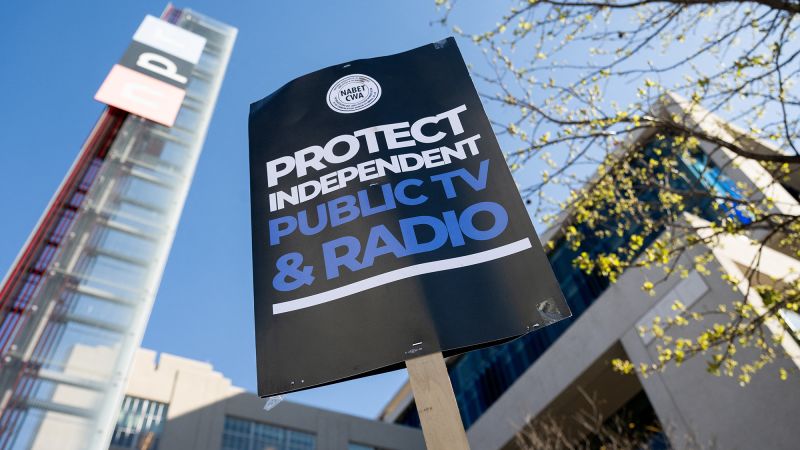The administration of former President Donald J. Trump has once again thrown public media into the political arena by initiating a dispute that culminated in the abrupt termination of three board members from the Corporation for Public Broadcasting (CPB). On a recent Monday, the White House dispatched emails informing these individuals that their services were terminated effective immediately, a decision purportedly made on Trump’s behalf. The swift actions taken led the CPB to react legally, prompting the corporation to file a lawsuit shortly thereafter on Tuesday.
The crux of the CPB’s legal argument lies in the foundational law established in 1967, which stipulates that the President lacks the authority to dismiss board members from the CPB. In its formal complaint lodged in Washington D.C., the corporation seeks judicial confirmation that the emails terminating the three members — Laura G. Ross, Thomas E. Rothman, and Diane Kaplan — carry “no legal effect.” Notably, these board members were appointed by President Joe Biden in 2022, though Ross’s initial appointment traces back to Trump in 2018, prior to her reappointment by Biden.
In a timely response to the situation, a federal judge has slated an initial hearing to take place on the Tuesday following the news of the terminations. In a statement, the CPB asserted its legal stance, arguing that the corporation should not be categorized as a federal agency under the purview of the President’s control; rather, it operates as a private entity. The White House, for its part, did not give immediate comment on the unfolding situation or the corporation’s lawsuit.
The role of the CPB is significant in the landscape of American media, as it acts as the custodian for federal investments in public broadcasting. Each year, it allocates approximately $535 million in taxpayer funding to public radio and television stations across the country. This funding supports prominent stations affiliated with both PBS (Public Broadcasting Service) and NPR (National Public Radio), which have recently faced intensified scrutiny and criticism from Trump’s administration. Additionally, the CPB provides funding to numerous less-recognized public media outlets, reinforcing its vital role in maintaining a diverse media ecosystem.
The administration’s future objectives regarding the CPB seem to indicate a chilling trend. Reports suggest that the White House plans to petition Congress to retract funding that has already been earmarked for the CPB over the next two years. The structure of the CPB includes five board members, and this recent political maneuvering underscores the tensions inherent between public media institutions and administrative powers.
The legal framework that established the CPB emphasizes its intended autonomy from political influence. According to the 1967 legislation, Congress specifically designated the corporation as a private entity to provide “maximum protection from extraneous interference and control.” This statute explicitly prohibits any government entity from exerting “direction, supervision, or control” over educational broadcasting, thus safeguarding the integrity of public media from political pressures and aims.
The underlying philosophy of creating the CPB was to secure a financial reservoir for media content aimed at educational, cultural, and public interest programming, often sidelined by for-profit broadcasters. Despite facing ongoing criticisms, especially from Republican sectors, the CPB has managed to receive congressional reauthorization for funding over the decades, ensuring its continued presence and operation.
Trump’s recent actions, notably the termination of the three CPB board members, seem to signal a renewed confrontation in the long-standing struggle between public media’s independence and partisan politics. It’s noteworthy that the two other board members—who were also Republicans but had been reappointed by Democratic presidents—did not receive termination notices, raising questions about the motivations behind these recent firings. The lawsuit filed by the CPB emphatically declares that “the President has no power to remove or terminate CPB’s Board members,” fortifying the legal stance against unexpected unilateral decisions stemming from partisan conflicts.



